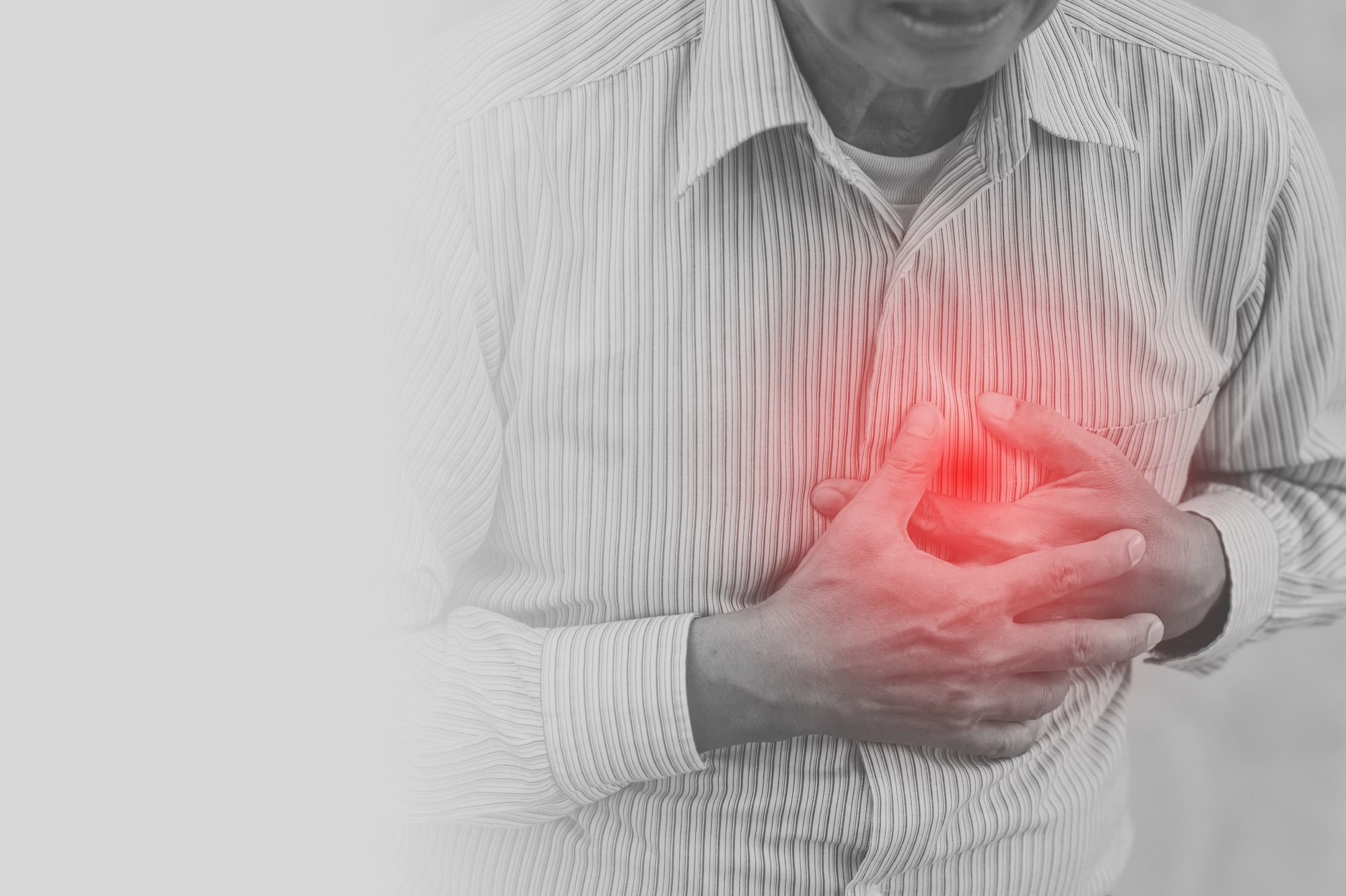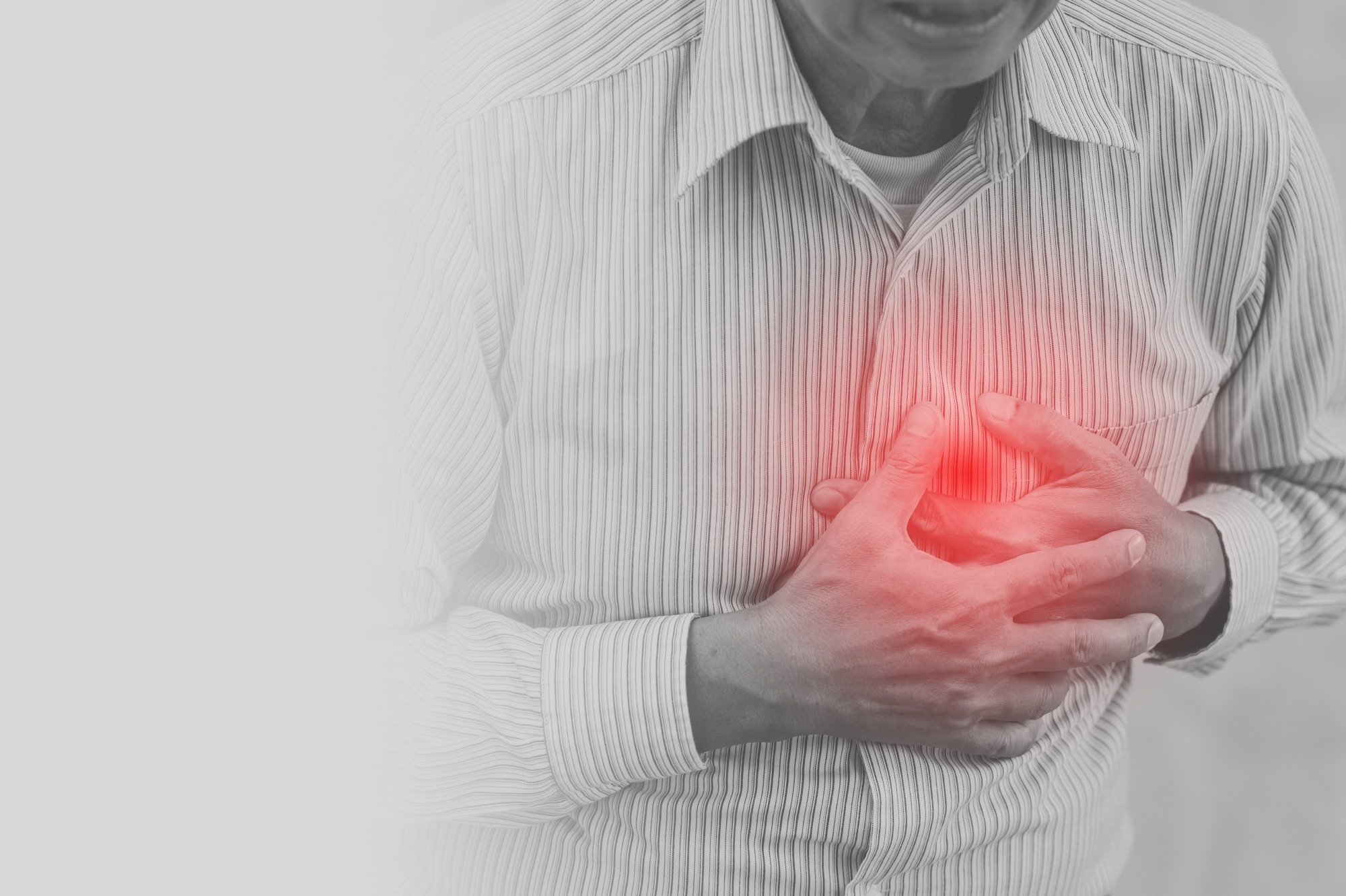Sudden cardiac arrest is a global public health problem associated with a mortality rate of more than 90%. Using digital technology, prearrest warning symptoms could be harnessed to potentially improve survival outcomes.
A new Lancet Digital Health study estimates the strength of association between symptoms and imminent sudden cardiac arrest.
 Study: Warning symptoms associated with imminent sudden cardiac arrest: a population-based case-control study with external validation. Image Credit: Quality Stock Arts / Shutterstock.com
Study: Warning symptoms associated with imminent sudden cardiac arrest: a population-based case-control study with external validation. Image Credit: Quality Stock Arts / Shutterstock.com
Background
Better methods are required to predict and prevent sudden cardiac arrest. About 50% of individuals with sudden cardiac arrest exhibit symptoms in the hours, days, or weeks leading up to the cardiac event.
Previous studies have identified palpitations, syncope, chest pain, light-headedness, and dyspnea as early signs of sudden cardiac arrest. However, due to their small sample size and lack of a comparison groups, these studies have been limited in their clinical applicability.
The relatively low occurrence of sudden cardiac arrest in the overall population, which is between 50-100 events for every 100,000 people annually, coupled with its dynamic nature, makes its early diagnosis challenging. Thus, there remains an urgent need for digital technologies capable of differentiating between individuals who are at high- and low risk of sudden cardiac.
About the study
The current study analyzed participants in the Oregon Sudden Unexpected Death Study (SUDS) and Ventura Prediction of Sudden Death in Multi-Ethnic Communities (PRESTO) studies. This study aimed to detect individual symptoms and groups of symptoms before cardiac arrest and compare these symptoms with those of controls who also sought medical attention.
The study participants were between 18-85 years of age and experienced sudden cardiac arrest between February 1, 2015, and January 31, 2021. Individuals who did not experience sudden cardiac arrest but reported to emergency medical services between January 1, 2015, and December 31, 2019, served as controls.
The association of symptoms in the discovery population was evaluated, and all results were validated in the replication population using logistic regression models.
Key findings
Over 30% of patients reported chest pain and dyspnea, whereas other symptoms were reported in less than 18% of patients. In sex-specific models, men experienced chest pain, dyspnea, and diaphoresis, whereas only dyspnea was associated with women, thus indicating the presence of significant sex differences in the presentation of sudden cardiac arrest.
Other symptoms, such as dizziness, nausea or vomiting, and weakness, were less common as compared to the control group. Notably, most symptoms were found to occur alone rather than in groups. These findings were externally validated in a geographically distinct population.
The insights presented here should lead to the discovery of novel methods to predict imminent sudden cardiac arrest. In the future, smartphone-based applications could compile an individual’s clinical profile, demographic data, measurements from biometric sensors, and a smartphone-generated electrocardiogram to predict a risk score for cardiac arrest. Although more research is needed to evaluate the effectiveness of warning symptoms, the current study findings provide foundational support for this diagnostic approach.
The use of a predefined list of symptoms, based on previous research, prevented the discovery of potential new symptoms of sudden cardiac arrest. Additionally, the reliability and comprehensive nature of symptoms reported by individuals, family members, or bystanders could not be verified.
While the current study identified some symptoms, other symptoms, such as palpitations, dizziness, and syncope, were not associated with sudden cardiac arrest. This observation could help emergency medical services identify the 50% of true sudden cardiac arrest cases that experience more alarming symptoms like chest pain and dyspnea.
Conclusions
Among individuals with symptomatic out-of-hospital sudden cardiac arrest, chest pain, and dyspnea were most common in men, whereas dyspnea was most common in women. These symptoms had a moderate association with sudden cardiac arrest compared to the control group.
The co-occurrence of symptoms and symptom type differed by sex. Furthermore, no individual symptom was widely prevalent enough to be used as a sole predictor of imminent sudden cardiac arrest.
The current study highlights that while warning symptoms are common, they should be supplemented with additional features, such as biometric measures and clinical profiles. In the future, wearable devices should be developed that combine symptoms with a patient’s clinical profile to predict imminent sudden cardiac arrest with greater precision.
Journal reference:
- Reinier, K., Dizon, B., Chugh, H., et al. (2023) Warning symptoms associated with imminent sudden cardiac arrest: a population-based case-control study with external validation. The Lancet Digital Health. doi:10.1016/S2589-7500(23)00147-4







